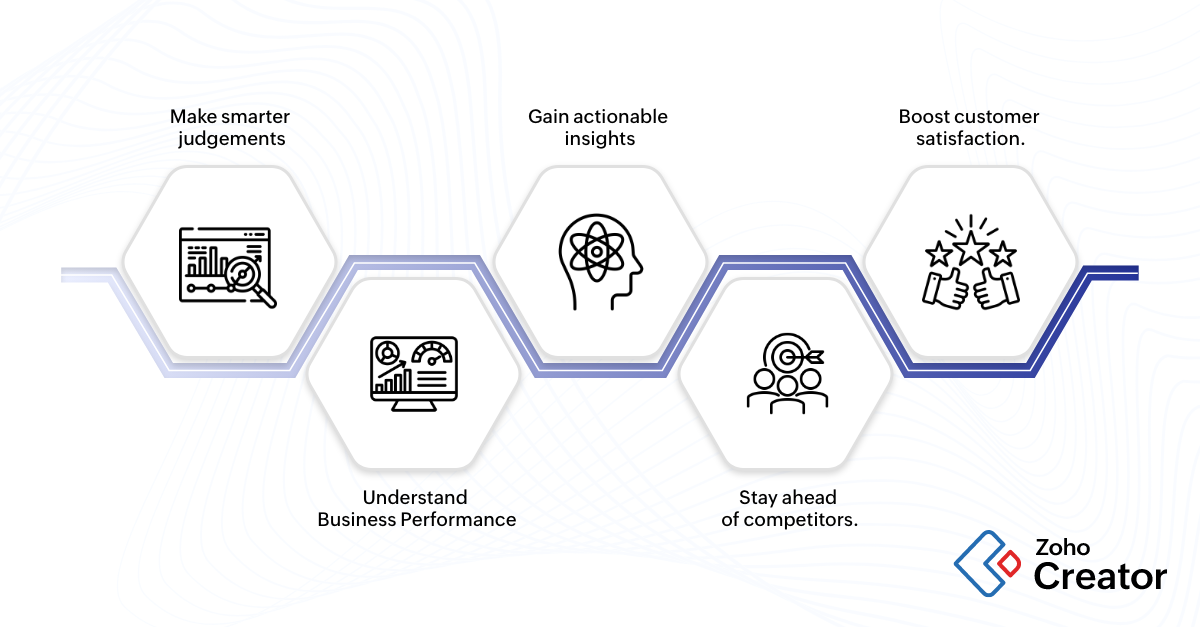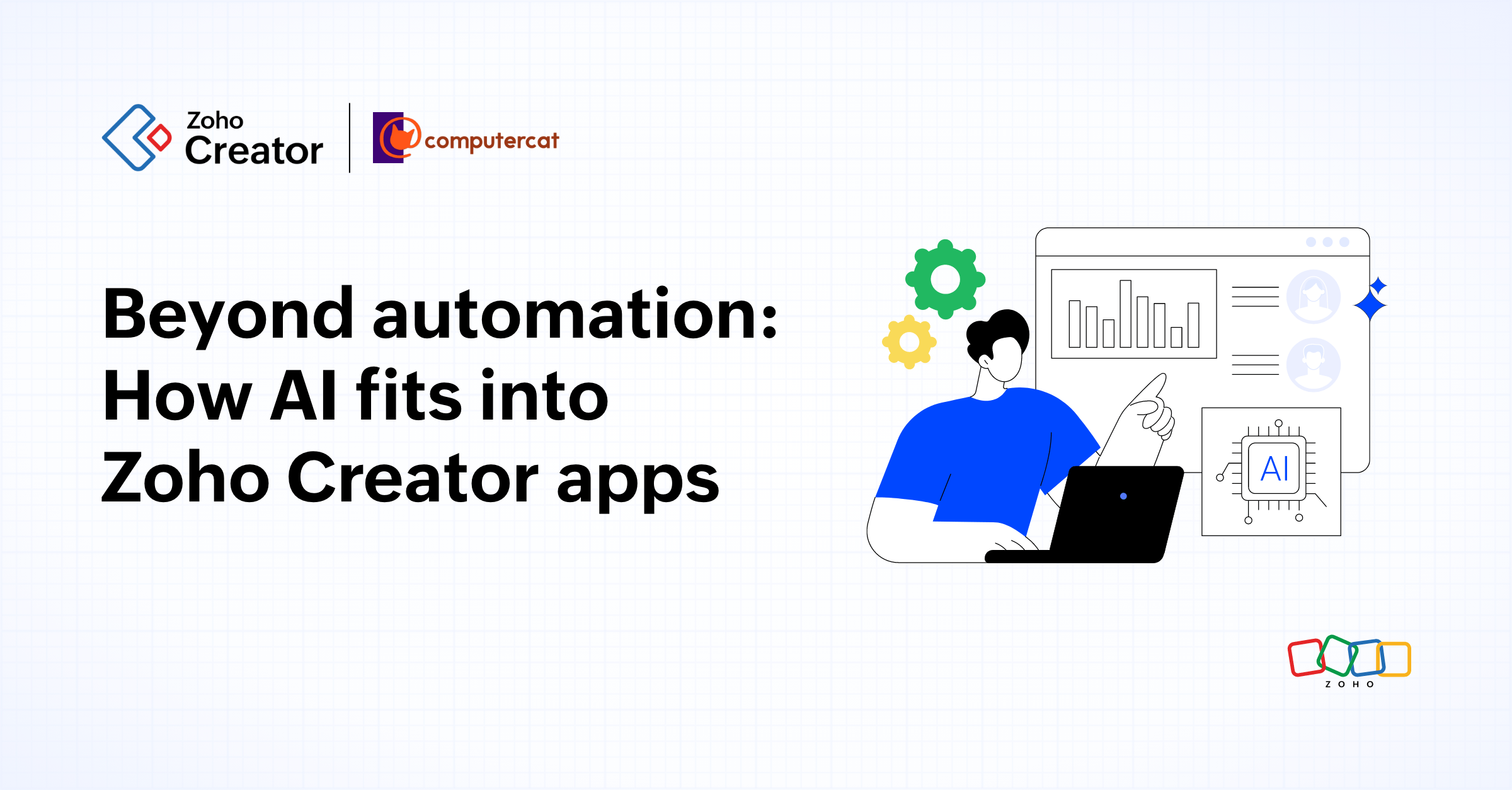- HOME
- Know Your Tech
- The 6 essential stages of business intelligence (BI)
The 6 essential stages of business intelligence (BI)
- Last Updated : August 11, 2023
- 12.5K Views
- 5 Min Read
What if you could make better business decisions and solve problems faster than your competitors? As it happens, there are tools that can help you do this. These tools can analyze huge amounts of data, extract valuable insights, and present relevant findings in a concise and easily digestible manner.
Business Intelligence (BI) is helping many businesses discover insights into new growth opportunities and ways to optimize their current operations. The right BI tools can help you improve the efficiency of your business processes before a minor issue becomes major.
According to Forbes, "Many companies, corporations and businesses are investing heavily in business intelligence to help them in ascertaining market trends and how to improve on their services."
What is business intelligence?
Assume you have a lot of data, scattered like puzzle pieces all over the place. It can be exhausting trying to make sense of it all. But business intelligence platforms make the process easier. They collect all of your data, clean it up, and help you uncover useful insights. It's like having your own team of data specialists to assist you in making better business decisions.
Business intelligence tools help you understand how your business is performing now, how it has performed in the past, and how it can perform in the future. With those insights, you will be able to identify which parts of your business require attention, and make informed decisions to increase sales and enhance the client experience.
Why is business intelligence crucial?
BI tools help you collect and analyze data in order to make better decisions. With these BI tools, you can learn how your firm is doing and what your consumers expect.
Here are some ways BI can benefit you:

Using business intelligence, you can make smarter judgements based on customer behavior and other important metrics.
Business intelligence software can provide you with an in-depth view of your business' performance, along with market trends.
BI tools help you identify bottlenecks, inefficiencies, and opportunities for improvement.
The insights provided by BI tools can help you personalize your marketing activities, boost client satisfaction, and encourage customer loyalty.
Where can business intelligence be used?
Let's use the example of an online clothing store. If you use a BI tool for your store, it will equip you with important insights based on the business data you collect. This can include data related to different functions, like sales, finance, and marketing.
BI for finance
Business intelligence tools can help you delve into data and trends related to your revenue, expenses, and profitability. They give you a comprehensive picture of your business' financial health, while helping you identify areas for development and make smart investment decisions.
BI for marketing
You can use BI tools to track data, like click-through rates and conversion rates, across your campaigns. By configuring your business intelligence system to closely track these metrics, you will be able to make more informed decisions and get better results.
BI for sales
In the sales department, business intelligence tools can give you useful information about customer interactions, sales patterns, and performance metrics.
Equipped with this information, you can easily manage sales funnels, track cross-selling and upselling opportunities, determine customer preferences, and estimate future sales trends. You can also develop the strategies you need to boost customer engagement, refine your sales tactics, and close more deals.
The 6 stages of business intelligence
Now that we've explored how BI can help businesses thrive, let's look at the six stages of successful BI deployment.

1. Data collection
Identify and gather relevant data from multiple data sources, either internal or external, such as spreadsheets, files, cloud storage platforms, and databases. This will help you develop a business objective and identify the data needed to achieve it.
Let's consider the case of the online clothing store again. Say you are running social media advertising campaigns to promote your brand and drive revenue.
To measure the effectiveness of your campaigns, you may collect data from social media analytics platforms and implement conversion tracking for your ecommerce platform. You could also engage with your customers through surveys and feedback forms to learn about their preferences, satisfaction levels, and purchasing behaviors.
2. Data preparation
Once gathered, the data must be prepared for analysis. This part of business intelligence involves cleansing the data and ensuring there are no inconsistencies, duplicates, or errors. Unstructured data must be organized and transformed before analysis.
Now, let's talk about how cleaning up your data can do wonders for your online clothing store. You have a large inventory with many products, but the data contains inconsistencies, duplicates, and inaccuracies. Before you can analyze the data and make sound decisions, you must first clean it up. This will ensure your inventory is accurate and your product suggestions are relevant.
3. Data storage
This stage of business intelligence entails storing all the data you've obtained. Typically, data is stored in a central location known as a data warehouse. Data encryption methods are used to safeguard the confidentiality and integrity of the stored information.
Going back to our online clothing store, you'll be handling customers' personal information and payment data. During the data storage step, you can encrypt and securely save all the collected data in a centralized data warehouse.
4. Data analysis
The data that has been collected and stored must ultimately be processed and analyzed to reveal patterns, trends, and insights. To extract useful information from data, many analytical approaches and algorithms are used.
By analyzing the sales data of your online clothing store, you'll obtain insights into your customers' preferences, popular products, and sales trends. From there, you will be able to refine your marketing techniques and improve the entire consumer experience.
It's similar to being a detective working on a case. You gather evidence, look for clues, and piece together the whole story. By analyzing sales data, you'll discover patterns, identify trends, and understand customer behaviors better.
5. Data visualization
After the data has been analyzed, it should be presented in the form of charts, graphs, dashboards, or other visual representations. Data visualization helps you efficiently present the insights gained from the data to a broader audience, including decision-makers and stakeholders.
In order to present your online clothing store's sales performance information, you'll want to use BI software to diplay your sales and revenue data, product performance data, and more with aesthetically appealing charts, graphs, and dashboards.
6. Decision making
Collaboration is essential for insight-driven decision making. Decision-makers and stakeholders must work together to discuss and determine the best course of action for the business.
Using all the insights you have gained about your online clothing store, you can make decisions by collaborating with decision-makers and stakeholders to optimize your marketing campaigns.
Consider a roundtable discussion with decision-makers and stakeholders. This way, each member can contribute their thoughts and experiences to the collaborative decision-making process.
Driving growth with business intelligence
Business intelligence is crucial for helping organizations make better decisions, solve problems more quickly, and gain a competitive advantage. Businesses can use BI platforms to convert raw data into meaningful insights, evaluate current and past business performance, and make informed decisions to promote development and success.
If you want a full picture of your business's performance and potential, business intelligence (BI) is the key. Zoho Creator is a powerful low-code solution that can help your company gain a competitive advantage. You can also explore Zoho Analytics, our comprehensive data analytics and business intelligence platform for your analytics needs.
 Varna C V
Varna C VVarna is a Product Marketer at Zoho. After her higher secondary education, she discovered Zoho Schools of Learning and chose to pursue her education in a non-conventional way. Outside work, she loves spending time with her friends. She sings all the time, sometimes on key.



